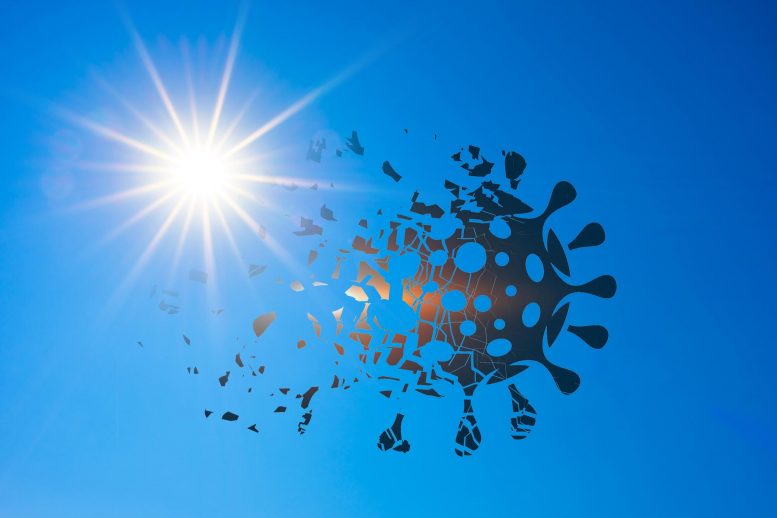
Researchers have found evidence that the spread of COVID-19 is sensitive to UV exposure.
Scientists, policymakers, and healthcare workers are eager to discern to what extent COVID-19 may be seasonal. Understanding this aspect of the disease could guide our response to the pandemic.
Researchers at UC Santa Barbara have found evidence that the spread of COVID-19 is sensitive to UV exposure. While this suggests that COVID-19 may vary with the seasons, there are other seasonal factors — such as temperature, specific humidity and precipitation — whose effects are uncertain given the available data. The results appear in the Proceedings of the National Academy of Sciences.
“Related species of coronavirus — like SARS from 2003 and MERS from 2012 — turned out to have weak relationships with temperature and humidity, but were sensitive to UV radiation,” said coauthor Kyle Meng, an environmental economist in UC Santa Barbara’s economics department and at the campus’s Bren School of Environmental Science & Management.
Meng, together with Tamma Carleton, also at the Bren School, Peter Huybers and Jonathan Proctor from Harvard, and Jules Cornetet at France’s École Normale Supérieure Paris-Saclay, sought to explore the relationship between UV radiation and the spread of COVID-19 by constructing a high-resolution global dataset of daily COVID-19 cases.
Many papers compare different locations to get a sense of how the disease reacts to various environmental conditions. But this approach introduces a host of potentially confounding factors into statistical models, such as health care quality, income, and cultural norms.
Meng offers the more temperate United States and more tropical Brazil as examples. “The U.S. and Brazil are different for all kinds of reasons,” he said. “They have different economic conditions and institutions in addition to different environmental conditions.” These distinctions, he said, prevent a clean comparison of the spread of COVID-19 based solely on environmental conditions.
To circumvent this issue, the team conducted a longitudinal study, essentially comparing many populations to themselves over time. So, rather than compare Brazil to the U.S., they would compare communities within Brazil to themselves at a different time, when local environmental conditions changed. “We basically ask whether daily fluctuations in environmental conditions experienced by a population affect new COVID-19 cases up to two weeks later,” Meng explained.
To accomplish this, the researchers needed a lot of data. Unfortunately, when the team began their work, international COVID-19 datasets, like that of Johns Hopkins, provided data only at the country level. Records with finer resolution were scattered across different agencies and institutions in a variety of languages and formats.
“We took many disparate datasets from different countries’ statistical agencies and harmonized them to create a global dataset composed of over 3,000 spatial units,” Carleton said. The authors then used a dataset of meteorological conditions with daily resolution to match local environmental conditions to daily COVID-19 case counts.
The researchers applied a suite of statistical techniques to analyze how four variables — UV radiation, temperature, humidity and precipitation — correlated with the daily growth rate of COVID-19 cases, a measure for how rapidly the disease was spreading in a region. They also estimated the lag time between changes in environmental conditions and possible effects on recorded COVID cases, which could be significant given the virus’s four to seven-day incubation period along with additional delays due to testing.
The team found evidence that a location’s UV exposure significantly affects COVID-19 transmission. A change in UV exposure by 1 standard deviation (roughly equal to the difference in UV between May and June in Los Angeles) reduced the growth rate of new cases by around 1 percentage point over the following two weeks. That could bring down COVID-19 growth rates from an average daily increase at the beginning of the epidemic of 13% to a 12% increase per day.
Based on the expected seasonal changes in UV radiation, the model predicted growth rates would increase by 7.3 percentage points for southern temperate locations between January and June. Meanwhile, northern temperate regions would see a UV-driven decrease of 7.4 percentage points during that same period, as longer days increased UV exposure.
This pattern switches as the seasons flip. By December, the researchers predicted COVID-19 growth rates could decrease by 7.7 percentage points in southern temperate regions, compared with July numbers, while cooler northern areas could see a jump of 7.8 percentage points over this period.
Importantly, the seasonal influence of UV on transmission of the disease is small relative to that of social distancing policies such as travel bans, school closures, or home isolation, the authors noted. Regardless of the weather, social distancing measures appear to be necessary to substantially slow the spread.
Conforming with these findings, infection rates appear to have decreased in the northern hemisphere during the summer, possibly due to increased UV exposure. However, much of the northern hemisphere also relaxed their COVID stay-at-home orders at the same time, Meng said. As a result, there’s a conflation between UV effects and the loosening restrictions during the summer months. “This is a big reason why our study uses daily fluctuations in UV exposure, in part to avoid conflating influences when looking at long-term, varying fluctuations.”
These findings are consistent with concerns about the surge of COVID-19 infections currently being experienced in the U.S. with the arrival of winter; however, to get the full seasonality picture, researchers will need more precise estimates of how the disease responds to other seasonally varying environmental conditions, such as temperature and specific humidity. “We are confident of the UV effect, but this is only one piece of the full seasonality picture,” Carleton said.
Lab studies will ultimately be critical in determining the mechanisms at work, though the authors suspect multiple factors may be behind the effect of UV on COVID-19 transmission, some of which cannot be studied in the lab. The first is biological. UV can damage the nucleic acids that the virus uses to encode its genetic information. Coauthor Jonathan Proctor, a post-doctoral fellow at Harvard, posited that UV radiation may inactivate the virus as it is being transmitted, such as when it’s suspended in the air or resting on an exposed surface. “Just as UV can destroy our own DNA if we don’t use sunscreen, UV can damage the COVID-19 virus,” Proctor said.
Another component is behavioral. For example, people may go out more often when it is sunnier, which could alter the risk of transmission. While laboratory studies can help determine the biological mechanisms, population-level studies like this one are able to also capture social factors.
“In the context of all this, our study suggests that seasonal changes in UV may influence COVID-19 transmission in the coming months,” Meng said. “And if that’s true, we need to think carefully about how to modulate COVID-19 containment policies in a seasonal manner.”
Reference: “Global evidence for ultraviolet radiation decreasing COVID-19 growth rates” by Tamma Carleton, Jules Cornetet, Peter Huybers, Kyle C. Meng and Jonathan Proctor, 15 December 2020, Proceedings of the National Academy of Sciences.
DOI: 10.1073/pnas.2012370118

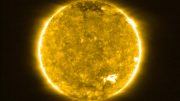
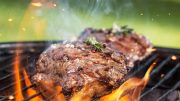
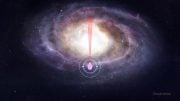
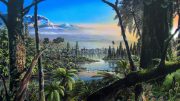
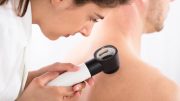
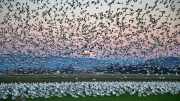
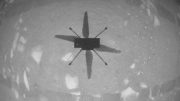
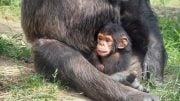
Nice
Extremely interesting and important Researrch.
Very important to get into more detailed understanding of the impact of Solar Rays on not just Covid 19 pandemic but also how to handle this and future pandemics and what public policies are ideal for containing and controlling these on a sustainable basis.
Sharing some thoughts and ideas and suggestions for the consideration of the Scientific Community. I include Computer Science , Data Scientists, Mathematicians ( the queen of the Scientific Community) and Statisticians ( whose tools enable us to gain insights by consolidation of large datasets and spotting patterns and determining correlations between the various parameters ) in the definition of Scientific Community.
The views and opinions expressed are personal and not binding on anyone.
So here goes. Many of these may seem outlandish at first glance! However, always worth a second look!
1. Always Wondered why we lump the entire Untraviolet Spectrum ( for that matter the entire Infra Red Spectrum ) as light with a common characteristics! Never really understood this tendency to generalise . When the visible spectrum of light itself consists of an infinite number of colours of the visible rainbow ( NOT just VIBGYOR from High School Physisc) , why do we Assume that all infrared spectrum and all UltraViolet Spectrum are same. I suspect a fine grain analysis of both these beyond the visible spectrum will be far more interesting and there may be UV spectrum light with different properties which could be less harmful as also infra red spectrum light which could be medically beneficial. This is a theoritical hypothesis and lots of Homework for the brilliant Physics experts and medical experts and reseachers across the globe.
2. Another thought which comes to mind is an obvious one. Why do we limit this type of analysis to only Covid -19 and that too only at the time of a pandemic and crisis. Why not attend to analysis of past pandemics , past plagues like the bubonic plague and populations of mosquitoes, rats etc which are known to spread such events from history? This should be possible by turning Predictive Analysis on its head ( call it Past-dictive Analysis!!). Start gathering Data from Satellites on all the parameters which could have caused such past events and also what could cause future events of such terrible consequences for humanity in terms of shortened lifetimes and suffering and lead to early death. Essential to master Risk Management and Risk avoidance technologies as Health and human well being is closey related to the entry of unfriendlly pathogens , bacteria and Viruses into the human ecosystem, which initailly causes Dis-Ease and the as it increases and multiplies in the pathogen, bactetia and viruses friendly Human Ecosystem it causes organ and systemic failure leading to Exit Stage Right .
3. Government Policies in times of Pandemics must be much more sensible and cannot be ALL or None type of decision-making. It needs to be balanced and sensible and aligned with Scientific Findings and Knowledge. Just as a Good Medical Doctor beleives in the adage “Prevention is Better” than Cure, So also the governments incharge of public policies need to adopt a similar methodology and ensure that strict compliance is practised. Especially when a Pandemic is afoot.
4. Let us look at Time – Space -Life and rethink and reimagine the ciurrent set of assumptions. The way I see it is as follows:
TIME IS Relative
Distanceis Relatice
Life is uncertain and varies with type of Ecosystem in which it has emerged.
Einstiens Theory of Relativity attemped to co-relate the relationship between Mass and Energy
using the Speed of Light. Good that the term Speed is used instead of Acceleration. However,
the nature of Light itself is poorly understood. Is it limited to traveling in straight
parralell lines forever?
Or can it be curved?
Can it cyclical, Spherical or even have limitless dimensions wecannot even conceptualise!
Wondering why this last comment! I am not able to figure out when a Pandemic becomes Endemic
and if in all such Pandemics, Mass Vacinnation will assuredly result on 100 ppercent control
of Pandemics like Covid 19.
So a focus on ensuring the determination of root causes of such infections and avoiding the
same is a smarter strategy.
Opinions expresed are personal and not binding on anyone.
Space?